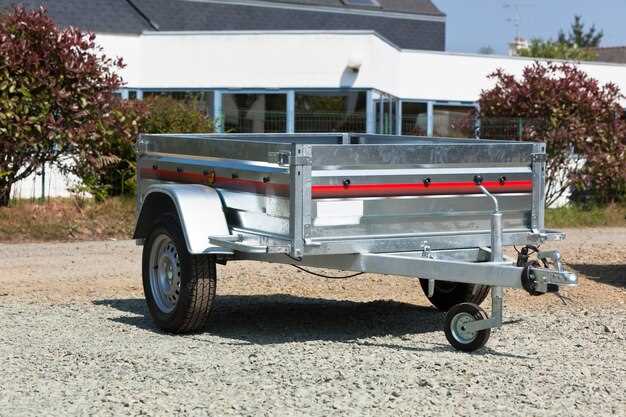
When it comes to transporting goods or vehicles, choosing the right trailer is crucial. Among the various trailer options available, utility trailers and motorcycle trailers stand out for their distinct designs and purposes. Understanding their key differences can help you make an informed decision based on your specific needs.
Utility trailers are versatile and can be used for a variety of hauling tasks. These trailers typically feature a flatbed design with low sides or no sides at all, making them ideal for transporting equipment, furniture, or landscaping materials. Their construction allows for easy loading and unloading, which is crucial for both personal and commercial use.
On the other hand, motorcycle trailers are specifically designed to transport motorcycles safely and securely. They often come with ramps and specialized tie-down points to ensure that bikes remain stable during transit. The construction of motorcycle trailers prioritizes the protection of the delicate components of the bike, offering features like wheel chocks and padded surfaces, which are not typically found in utility trailers.
In summary, while both utility trailers and motorcycle trailers serve the purpose of transport, they cater to different audiences and applications. Understanding these differences can significantly enhance your hauling experience, ensuring that you choose the right equipment for the job.
Load Capacity: How Much Weight Can Each Type Handle?

When comparing utility trailers and motorcycle trailers, one of the primary considerations is load capacity. This aspect significantly influences what you can transport and the overall utility of the trailer.
Utility trailers are designed for versatility, often boasting a higher load capacity. They typically range from 1,000 to 3,000 pounds, depending on their size and construction materials. Heavy-duty models can even handle more, making them suitable for hauling everything from general cargo to construction materials.
On the other hand, motorcycle trailers are specialized for transporting motorcycles and usually have a lower load capacity. Typically, these trailers can handle anywhere from 500 to 2,000 pounds. The design prioritizes stability and security for the bike rather than a high payload, ensuring it remains safe during transit.
It’s crucial to consider your specific needs when choosing between these trailers. If you require the capability to transport bulkier or heavier items, a utility trailer is the better option. For motorcycle enthusiasts, however, a dedicated motorcycle trailer is engineered to provide stability and protection for your bike.
In summary, understanding the load capacity of each trailer type is essential for effective transportation. Utility trailers offer greater versatility in weight handling, while motorcycle trailers focus on safe transport for bikes within set limits.
Towing Compatibility: Which Trailers Fit Your Vehicle?
When it comes to towing, understanding the compatibility of your vehicle with different types of trailers is essential. Both utility trailers and motorcycle trailers serve distinct purposes, and knowing their specifications can help you make an informed choice.
Here are some factors to consider when assessing towing compatibility:
- Vehicle Tow Rating: Each vehicle comes with a specific tow rating that dictates how much weight it can safely pull. Check your owner’s manual for this information.
- Trailer Weight: The weight of the trailer, including the cargo load, must be calculated. A utility trailer typically has a higher weight capacity than a motorcycle trailer, which is generally lighter.
- Hitch Type: Different trailers require different hitch types. Utility trailers often use a ball hitch, while motorcycle trailers might use a specialized hitch for secure attachment. Ensure your vehicle is equipped with the compatible hitch type.
- Braking System: Larger utility trailers may need a braking system if they exceed a certain weight, while motorcycle trailers usually have simpler braking requirements. Verify the braking requirements based on your towing capacity.
- Size and Length: Consider the overall size of the trailer and how it will fit with your vehicle. A utility trailer can be larger, affecting maneuverability, while motorcycle trailers are typically designed for easier handling.
In conclusion, selecting the right trailer involves not only understanding the trailer itself but also ensuring its specifications align with your vehicle’s towing capabilities. By considering these factors, you can ensure a safe and effective towing experience.
Design Features: What Makes Each Trailer Unique?

Utility trailers are designed with versatility in mind, featuring a flatbed surface that can accommodate various loads, from furniture to construction materials. Their sturdy construction often includes a steel frame and a wooden or metal floor, allowing for heavy-duty usage. Most utility trailers have removable sides and a ramp for easy loading and unloading, making them highly adaptable to different tasks.
In contrast, motorcycle trailers prioritize the safe transportation of motorcycles. They typically come equipped with rail systems or wheel chocks that secure the bike during transit, minimizing the risk of tipping or damage. These trailers are often lighter than utility trailers, allowing for easier towing by smaller vehicles. The design features often include a low loading height and a streamlined shape to reduce wind resistance, ensuring a smoother ride for both the motorcycle and the towing vehicle.
Additionally, utility trailers often have a larger cargo capacity compared to motorcycle trailers, which are more specialized in their function. This specialization results in a different approach to design, focusing on stability and safety for two-wheeled vehicles rather than the versatility required for a broad range of cargo.
In summary, the design features of utility and motorcycle trailers reflect their intended uses. Utility trailers offer adaptability and strength, while motorcycle trailers emphasize security and safety for two-wheeled rides, making each uniquely suited for its specific purpose.





